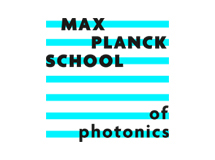Federal Patent Court visits the Max Planck Institute for the Science of Light
As part of a training initiative of the 19th and 4th Senates of the Federal Patent Court in Munich, a five-member delegation visited the Max Planck Institute for the Physics of Light in Erlangen. The aim of the senate training was to inform the judges about the state of research and technology directly at the origin of potential inventions. Our institute provided optimal conditions for the participants to get a picture of the entire process from basic research to the spin-off of a start-up company.

The Federal Patent Court decides whether an intellectual property right (patent, trademark, utility model, topography, design, plant variety right) can be granted and registered or is to be rejected. It can cancel a granted IP right or declare it null and void. A special feature of the Federal Patent Court in the system of the German court structure is that its judges consist not only of lawyers but also natural scientists - technical judges [1]. Thus, the group of visitors, including one judge, three technical judges and the presiding judge of the 4th Invalidity Senate, consisted of physicists, electrical engineers and a fully qualified lawyer.
The Max Planck researchers had prepared a day full of science for the visitors. In the technical service unit, Dr Michael Frosz showed how photonic crystal fibres are produced in our clean room and how these filigree glass fibres with their micro- and nanostructures enable scientists to study light. Laura Blázquez Martínez, from Dr Birgit Stiller's Quantum Optoacoustics research group, then explained to the judges how light and sound waves can be made to interact experimentally. The tour continued to the Biological Optomechanics research group of Prof. Dr Jochen Guck. Here, using real-time deformation cytometry as an example, the visitors learnt that new photonic and biophysical tools can be used to investigate the physical properties of living cells and tissues. Dr Richard Taylor and Dr Alexey Shkarin then demonstrated the advanced optical microscopes in Professor Vahid Sandoghdar's Department of Nanooptics, which enable researchers to study the inside of living cells and precisely transfer experimental chemicals into them using a special technique.
For the judges the day's visit to the MPL ended with a tour of the Institute's own clean room. As Dr Olga Lohse, Head of the associated Micro- and Nanostructuring Department, proudly pointed out, this room is unique within a radius of hundreds of kilometres in terms of its high-tech equipment.
[1] https://www.bundespatentgericht.de
Contact
Edda Fischer
Head of Communication and Marketing
Phone: +49 (0)9131 7133 805
MPLpresse@mpl.mpg.de





